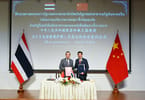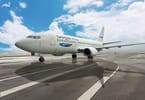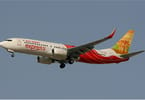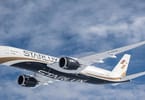PwC US (PricewaterhouseCoopers US), on Wednesday, June 4, released Tailwinds, its annual report on the airline industry, which reveals that the global airline industry is set to face more aggressive competition in the coming year, charged by expansion of the low-cost carrier (LCC) business model, the rapid growth of airlines in the Middle East, and a rise in joint ventures (JVs) to increase international flights. With a successful year in growth and operating income in 2013, the overall industry picture is favorable, but with competition on the rise, driving efficiencies by becoming a ‘connected airline’ can help airlines better navigate the landscape and stay ahead.
According to the report, global airline revenues are expected to have reached a new high of $708 billion in 2013, driven by increased passenger revenue resulting from more flights and scheduled passengers. Additionally, LCCs continued to gain global market share, increasing to over 25 percent in 2013, restraining the yields of the legacy carriers. Airlines also saw operating expense relief in 2013 due to lower fuel prices, while there has been an uptick in labor and maintenance costs. Airlines will continue to face rising labor costs due to expected growth in the demand for pilots and maintenance technicians.
For the remainder of 2014, the report expects the LCC model to likely evolve in western markets, and the concept will gain more traction in Asia as carriers target nearby emerging markets in the region. Middle East carriers are likely to become more of a competitive threat on international routes, as they are well-funded and have lower fuel costs and an advantageous geographic position. Additionally, Middle East carriers have placed a record number of orders for new wide-body aircraft for the next decade, signaling their intended expansion. Competition is also likely to increase as airlines push for more JVs and antitrust immunity agreements (ATIs) to target international growth. Airlines in Asia are using the LCC model in JVs to capture more traffic, and more airlines will pursue new JVs and ATIs to be able to offer more direct flights on international routes. PwC’s report also notes that carriers are likely to remain capacity disciplined relative to previous cycles.
“The airline industry is undergoing a recovery marked by increased revenues and profitability, but the results widely vary between regions, and cost pressures remain a challenge across all markets,” said Jonathan Kletzel, U.S. transportation and logistics leader, PwC. “With growth in expenses and increased competition threatening future profit growth, many airlines find themselves at a crossroads. They can continue to make small incremental improvements, or take bolder steps to become the ‘connected airline’ of the future, applying technology and analytics to achieve more significant advancements.”
Traditional airlines operate in siloes, with each major airline function – the traveler, flight crew, technician, aircraft and airport – independently managing data and prioritizing investments for its own ends. The concept of the ‘connected airline’ is defined as an airline operation in which the most relevant information is easily available to all stakeholders, when and wherever needed, allowing all parties to improve decision-making, prevent or accelerate the resolution of issues, and turn data into actionable information. This sharing of actionable data is critical to building a connected airline as it improves air- and land-side operational coordination, allows managers to better predict and prepare for maintenance events, enhances services for high-value customers, and increases merchandising revenue, among other benefits.
“Airlines fear launching a connected airline program may be costly and time-consuming, crowding out other critical initiatives and perceive the skills gap to be too large to adopt this approach,” continued Kletzel. “However, airlines don’t need to wait until all stars are aligned; they can start building a connected airline with small scale projects that mitigate investment risks and help demonstrate the utility of the concept. Airlines testing new models will achieve early wins and see greater return in further developing advanced initiatives down the line.”
For a copy of PwC’s Tailwinds, please visit: http://www.pwc.com/us/en/industrial-products/airlines-airports/index.jhtml.
WHAT TO TAKE AWAY FROM THIS ARTICLE:
- PwC US (PricewaterhouseCoopers US), on Wednesday, June 4, released Tailwinds, its annual report on the airline industry, which reveals that the global airline industry is set to face more aggressive competition in the coming year, charged by expansion of the low-cost carrier (LCC) business model, the rapid growth of airlines in the Middle East, and a rise in joint ventures (JVs) to increase international flights.
- For the remainder of 2014, the report expects the LCC model to likely evolve in western markets, and the concept will gain more traction in Asia as carriers target nearby emerging markets in the region.
- Airlines in Asia are using the LCC model in JVs to capture more traffic, and more airlines will pursue new JVs and ATIs to be able to offer more direct flights on international routes.






















